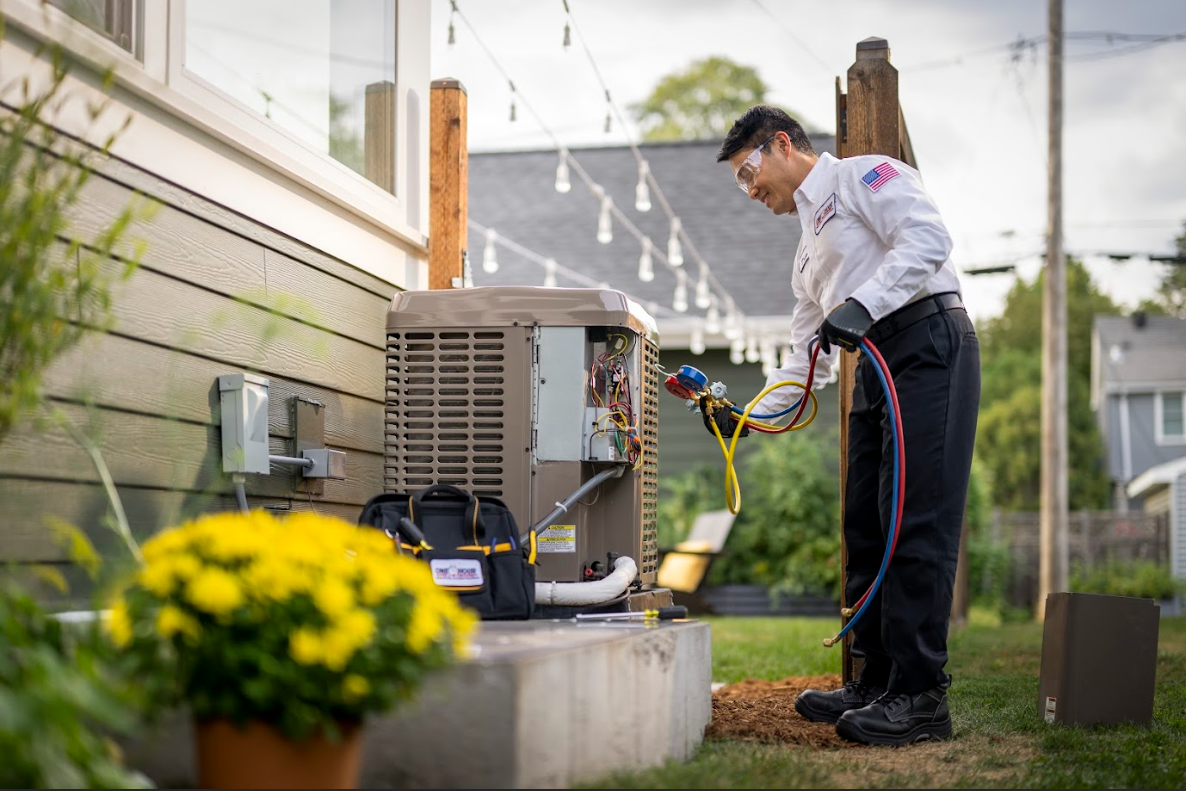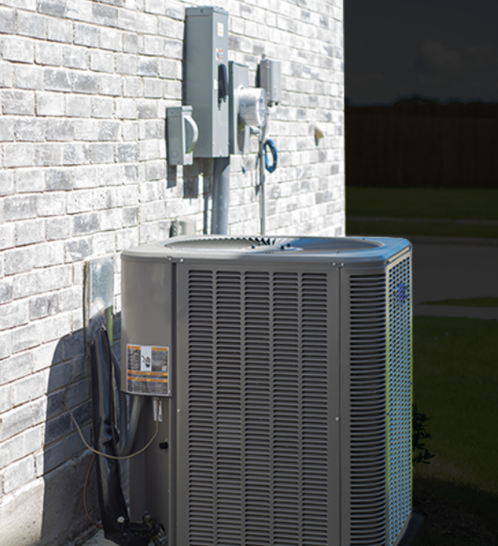
How to prepare your furnace before the first snow
A Wasatch Front winter hits fast. The first snow arrives, and a furnace either responds with steady, clean heat or coughs, rattles, and spikes the gas bill. A little prep in October or early November keeps homes in Ogden, South Ogden, and Washington Terrace warm without surprises. Here is a practical, local checklist from techs who service Weber County homes every day.
Start with safety: gas, venting, and carbon monoxide
Any furnace that burns natural gas or propane needs clear air and a clean exhaust path. Homeowners in older Ogden bungalows and split-levels in Roy see the same two problems every fall: blocked vents and tired carbon monoxide alarms. Fresh air intake grilles and exhaust terminations on the side wall can collect cottonwood fluff in spring, mud wasp nests in summer, and leaves in fall. A quick visual check for obstructions around the PVC pipes outside helps a furnace breathe. Inside, a carbon monoxide detector on each level, especially near bedrooms, isn’t optional. Detectors age out after 5 to 7 years and go from reliable to risky. If the label shows an older date, replace it before the first long heat cycle.
On the furnace itself, look for a steady blue burner flame once it’s running. A lazy yellow flame can signal dirt, a vent obstruction, or improper combustion. That is a stop-and-call moment for a licensed tech. Combustion issues are not a DIY fix.
Change the filter before the cold snap
Airflow is the life of a furnace. Most no-heat calls during the first storm in Ogden trace back to a clogged filter. A 1-inch pleated filter usually needs replacement every 1 to 3 months. A 4- or 5-inch media filter can run 6 to 12 months depending on pets and construction dust. If a filter bows inward, whistles, or has gray matting, it is past due. A clean filter protects the blower motor, keeps supply air temperatures stable, and prevents the heat exchanger from overheating and shutting down.
Homes near Harrison Boulevard and in newer West Haven subdivisions often have tight ductwork that stresses airflow. Choosing the right MERV rating matters. MERV 8 or 10 protects most systems without choking them. High-MERV 13 filters catch more particles but can starve airflow if the system wasn’t designed for it. If the furnace short cycles or gets louder after a filter change, step the MERV down or have a tech measure static pressure.
Test run the furnace on a mild day
Waiting until a 15-degree night exposes every weakness at once. Turn the thermostat to heat on a calm afternoon and set it 3 to 5 degrees above room temperature. The furnace should start within a minute, the burner should light smoothly, and warm air should reach the far rooms in 5 to 10 minutes. Listen for rattles, thumps, or metallic squeals. Those noises often come from loose panel screws, a failing inducer motor, or a dry blower bearing.
Odor is normal for the first 10 minutes after a long off-season; dust on the heat exchanger burns off with a light smell. If smoke appears, power down and call for service. A burning electrical smell points to wiring or motor issues and needs a professional.
Clear the supply vents and return grilles
Furniture drifts over vents during summer. In Ogden’s mid-century homes, returns are often low on walls or in the hallway. A return grille blocked by a bookcase or a rug cuts airflow and raises operating temperature. Open supply registers fully in each room; half-closed registers can increase duct pressure and create whistle noises or heater shutdowns. If a room runs cold even with vents open, that may be a duct balance issue rather than a furnace problem.
Check the condensate path on high-efficiency units
Many Ogden homes have 90-plus AFUE furnaces with PVC flues and a condensate drain. That drain line clogs with algae and dust, then the furnace trips a safety switch. Look for a small plastic trap and tube near the bottom of the unit. Make sure the tubing isn’t kinked and the drain flows freely to a floor drain or pump. If there is a condensate pump, plug it in and listen for a test cycle by lifting the float briefly, then let it drop. If the pump hums without moving water, it should be replaced before https://www.onehourheatandair.com/ogden winter. Clogged drains are a top reason for mid-season heat loss calls across Weber and Davis counties.
Thermostat and wiring basics
Smart thermostats are common in new builds in North Ogden and Plain City, but many older homes still run on two-wire heat-only systems. A new smart stat often needs a C-wire that isn’t present. If the screen reboots, drops Wi-Fi, or the furnace clicks without starting, the thermostat may be underpowered. A professional can add a C-wire or a power extender. For any thermostat, fresh batteries before the first snow prevent strange behavior on the coldest night.
Energy savings without sacrificing comfort
Once the furnace runs clean, small settings changes can lower bills. A steady setpoint with modest setbacks works well in Ogden’s climate. A 2 to 4 degree setback at night usually saves energy without long morning warm-ups. Bigger setbacks can cause the furnace to run longer at higher fire rates, erasing savings. Ceiling fans set to clockwise on low recirculate warm air without drafts in rooms with vaulted ceilings common in newer Harrisville homes.
Duct sealing makes a real difference in basements and garages that draw cold air. If supply trunks in the crawlspace feel leaky, a tech can measure leakage and seal the worst joints with mastic. Measured improvements often hit 10 to 20 percent less runtime on similar days.
What a pro tune-up in Ogden covers
Homeowners can handle filters, vents, and a test run. A certified technician goes deeper. On a fall visit, One Hour Heating & Air Conditioning checks static pressure, burner ignition, flame sensor microamps, temperature rise across the heat exchanger, and draft on the inducer. The tech cleans the flame sensor, verifies gas pressure with a manometer, inspects the heat exchanger for cracks, and tests safety switches. That level of detail prevents nuisance shutdowns in December and reduces the chance of a cracked heat exchanger leaking carbon monoxide.
Anecdotally, homeowners in Riverdale who schedule service before Halloween call less during storms. The first snow always creates a surge of no-heat calls. A scheduled tune-up keeps a home ahead of the rush.
Signs that point to furnace repair
Some symptoms mean it is time to search for furnace repair Ogden before the first storm hits:
- Short cycling, where the furnace turns on and off within a few minutes
- Cold air at the registers after ignition
- New banging, grinding, or high-pitched squeals
- A persistent gas smell or scorch marks on the cabinet
- Rising gas bills with no change in thermostat settings
If any of these show up in a home in Uintah, West Haven, or downtown Ogden, a same-day visit is the right move. Waiting for colder weather usually turns a small part replacement into a bigger repair.

Aging equipment and replacement math
A well-maintained furnace in Ogden lasts 15 to 20 years. After that, heat exchangers and control boards start failing more often. If repairs in the last two seasons have topped a few hundred dollars each year, a replacement quote is worth a look. Newer furnaces bring quieter inducers, variable-speed blowers for steadier heat, and better humidity control during long cold spells. Homes that already have central AC can often reuse the existing line set and thermostat wiring, which keeps install costs reasonable. A tech can compare repair versus replace and run operating cost estimates based on actual gas rates along the Wasatch Front.

Quick homeowner checklist before the first snow
- Replace or clean the furnace filter and make sure airflow is strong
- Test heat on a mild day and listen for unusual sounds
- Clear intake and exhaust pipes outside and open all vents inside
- Check carbon monoxide detectors and replace any older than 7 years
- Verify the condensate drain or pump works on high-efficiency models
Local help for fast, clean heat
A reliable furnace keeps families comfortable through Ogden’s lake-effect storms and canyon winds. For fast diagnostics, clear pricing, and punctual arrivals, One Hour Heating & Air Conditioning is ready for furnace repair Ogden and pre-season tune-ups in Ogden, UT and nearby neighborhoods. Whether a home needs a quick flame sensor cleaning, a new igniter, or a full system check, the team handles it the same day in most cases.
Call or schedule online before the forecast turns. Early appointments mean smoother starts, fewer surprises, and lower bills once the first snow lands. If heat quits after hours, ask for emergency furnace repair Ogden UT to get a licensed tech on the way.
One Hour Heating & Air Conditioning provides trusted furnace repair in Ogden, UT and full-service HVAC solutions for homes and businesses. Family-owned and operated by Matt and Sarah McFarland, our company is built on honesty, hard work, and quality service—values passed down from Matt’s experience on McFarland Family Farms, known across Utah for its sweet corn. As part of a national network founded in 2002, we bring reliable heating and cooling care backed by professional training and local dedication.
Our licensed technicians handle furnace and AC installation, repair, and maintenance, heat pumps, ductless mini-splits, thermostat upgrades, air purification, indoor air quality testing, humidifiers, dehumidifiers, duct cleaning, zoning systems, and energy-efficient replacements. We stand by a 100% satisfaction guarantee through the UWIN® program and provide honest recommendations to help Ogden homeowners stay comfortable year-round.
Call today for dependable service that combines national standards with a personal, local touch.
One Hour Heating & Air Conditioning
1501 W 2650 S #103 Phone: (801) 405-9435 Website: https://www.onehourheatandair.com/ogden
Ogden,
UT
84401,
USA